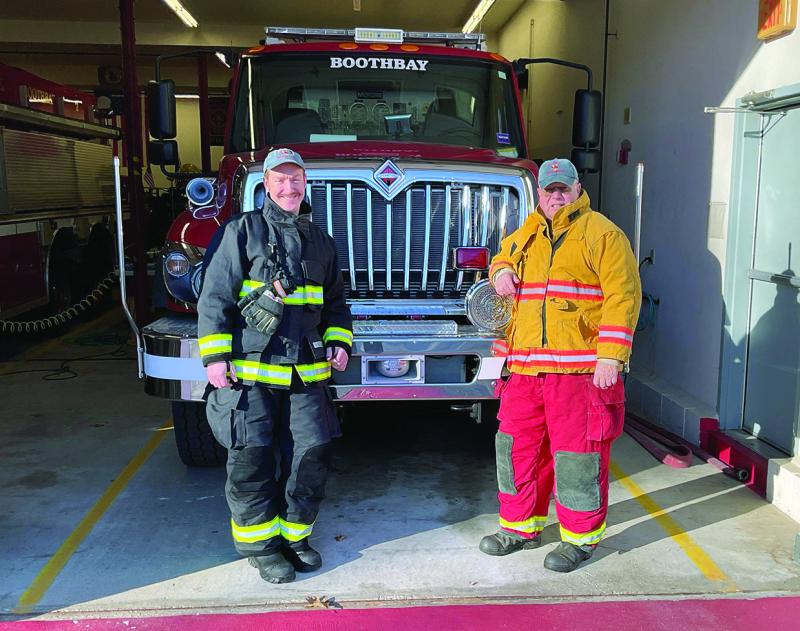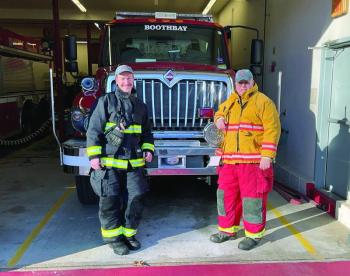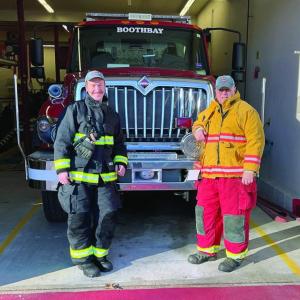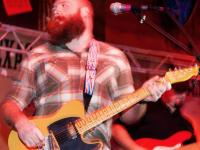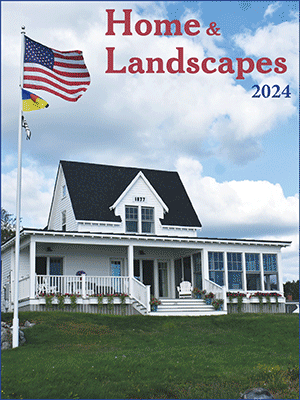Chief’s Column – Christmas Tree and Holiday Fire Safety
On behalf of all the women and men of Boothbay Fire & Rescue, we hope that everyone has a Happy Holiday and New Year, and you can spend time with family and friends.
It’s also a period where fire departments across the US see an increase in holiday related fires and associated injuries caused by improper use or care of Christmas trees, candles, electrified holiday decorations and extension cords. While each one of these can be dangerous if not used properly, when combined all together it’s extremely important to carefully inspect, properly install and actively monitor Christmas Trees, electrified decorations and candles.
In this column, we will highlight these serious risks and a few key steps and actions you and your family can take to be safe. For the safety tips and key actions sections of the article, we are also introducing the use of digital “QR” codes, which with the use of your phone and camera for the print version, and phone and PC for the digital online version of the Register can take you directly to the one-page internet site for the relevant information safety tip sheet. We felt this approach would allow readers an easier and more repeatable process to access key information and to save and print this information for further review and use. Please reach out to me at chief@boothbayfire.org with any feedback, ideas for future chief’s columns and your thoughts on the new use of digital QR codes in the Chief’s Column.
Natural & Artificial Christmas Trees
For all the joy and beauty Christmas trees bring, it’s important to remember that they are large combustible items that present potential fire hazards in the home. Overall, home Christmas tree fires don’t happen often—fires involving candles happen roughly 38 times more frequently in the U.S., for comparison—but when Christmas tree fires do occur, especially involving fresh Christmas trees, they’re likely to be very serious. That’s in part because fresh Christmas trees dry out over time, making them more flammable the longer they’re in the home. A dried-out Christmas tree will burn much more quickly than a well-watered one.
In controlled tests, fire researchers found that a dry Christmas tree can become engulfed in less than 10 seconds and a “flashover” occurs roughly 70 seconds after an un-watered tree is ignited. At its peak, a burning 6-foot tree can give off the same heat as 40,000 100-watt lightbulbs – as much as a burning full-sized automobile. This is enough to create flashover conditions within a typical living room. Flashover is when all other objects in a room are ignited by the fire and it rapidly spreads to other rooms.
Well-watered trees, by contrast, do not usually allow flames to spread beyond one section of burning branches.
For those viewing this article on the online version (Paper version type in the following link in your browser), please click the attached link and watch this video which DRAMATICALLY demonstrates how fast a dry Christmas tree fire can spread versus a well-watered tree. https://tinyurl.com/Waterthetree
It’s also important to keep in mind that while real Christmas trees are three times more likely to be involved in a Christmas tree fire compared to artificial trees that doesn’t mean artificial trees can’t catch fire. If you have a artificial tree, you still need to be careful not to place it too near a heat source and to use appropriate lighting and follow all the manufacturer’s instructions. If you’re in the market for a new artificial tree, make a point to shop for a flame-resistant model.
Candles and Extension Cords
Candles are a part of many celebrations, but open flames make them dangerous if they tip over or when they are placed too close to anything that can burn. On average, 20 home candle fires are reported each day. Remember, a candle is an open flame, which means that it can easily ignite anything that can burn.
During the five-year period of 2018-2022, U.S. fire departments responded to an annual estimated average 5,910 home structure fires started by candles. These fires cause an annual average of 74 civilian deaths and 558 civilian injuries, as well as $257 million in property damage. The rate of 94 injuries per 1,000 reported candle fires was nearly three times the rate for all home structure fire causes. Half of all candle fires started when a flammable piece of décor – such as furniture, mattresses, bedding, curtains, home decorations, paper, or clothing – was too close to the lit candle.
Extension cords are intended as temporary wiring solutions. If you find you're using them on a permanent basis, consider updating your home's electrical system. According to the latest statistics, Electrical distribution or lighting equipment was involved in more than two in five (41 percent) home Christmas tree fires.
Roughly 3,300 home fires originate in extension cords each year, killing 50 people and injuring 270 more. Extension cords can overheat and cause fires when used improperly and at Boothbay Fire, we frequently encounter residences that use extension cords that are worn-out, damaged or overloaded, and during the holiday season “daisy chained” electrical cords which do not have the sufficient capacity to carry the electrical load.
What to do in case of a fire or related emergency
If your Christmas tree, decorations or anything catches fire, call 911 immediately. If in doubt, get out. No matter what — even if you can put it out yourself — it’s best to call in the professionals. Even if the fire is out when we arrive, we can assess the situation and make sure it’s safe.
In summary, keep these points in mind:
“Gauge the size” of the fire; a smaller fire can quickly spread and grow to other areas of the home.
If you can contain the flame before it becomes bigger than a small trashcan, and if you have the right type of fire extinguisher, use it quickly to extinguish the blaze. Place a fire extinguisher in a visible space in your home or office during the holiday period, and familiarize yourself with the use of the fire extinguisher
If you’re using the fire extinguisher and the fire isn’t shrinking, leave the structure immediately and wait for the fire department to arrive.
Ensure your smoke and carbon monoxide alarms are working properly. Create a home escape plan; share it and practice it with your family and guests.
Keep space heaters away from Christmas trees, or anything that can catch on fire or burn. NEVER use an extension cord to power a space heater.
Finally, I wanted to close with a continuation of our Firefighter profiles series. In this week’s column we are highlighting Lucian Lorie and David Washburn, two firefighters who joined a short two years ago but have made an immediate impact with their enthusiasm, commitment to learning and making a real difference at fires and accident scenes. Our most important resource is our Firefighters, and the fact is that not many are answering the call to volunteer in the Fire Service. It also takes years to learn the requisite skills and capabilities – not just the training – but demonstrating these skills in actual incidents. Lucian and Dave have fully embraced this calling and made a real difference in our department.
Name: David Washburn
Years: 1.5
Position: Firefighter
Full time position: Aquatics Director at the YMCA
Why did I join: I have always enjoyed helping people. The feeling you get when you positively impact someone's day is one of the greatest feelings. From a little nod of the head to a large hug, you just know they are so thankful for your work. I had missed that feeling when I first moved here. Since joining the fire department, I have gotten that feeling of helpfulness back.
What do I like best: I like that no matter the reason a group of us come together and make a huge difference in someone's day. I like how we feel like family.
What have I learned since joining: I have taken the basic fire class as well as the Emergency vehicle operator course, but one of the biggest things I have learned is that the families of the firefighters have the biggest hearts. It doesn't matter what is going on, a date night, late at night, holidays or any other time, when that call comes in, the firefighters drop everything and go and the families understand that. It takes a lot of courage, strength and trust to let a loved one run out of the house on the way to help someone else and you don't see that in a lot of other professions.
Name: Lucian Laurie
Years at Boothbay Fire: 2
Role at Boothbay Fire: Firefighter
Full-Time Employer: Retired Military/Federal Service
Why did you join the fire service: Primarily because Chief Pratt said it would be useful to have someone to help with traffic control at emergency scenes and having me there would free up another more qualified firefighter.
What do you like about the fire service: The excitement of responding to a call with almost no idea what we will confront and what sort of application of our learned skills and our life experience will get us through. In the 2 years I have been a member, we have handled everything from the mundane tree down over the road to the critical motor vehicle rollover with a victim entrapped inside. Along the way, working and training with other people has helped to form bonds of mutual respect and loyalty that few outside of the military can understand.
What have you learned since joining: I had medical knowledge as an EMT, Army Medic, and Navy Nurse. I was the Emergency Manager for Naval Hospital Cherry Point on 9/11 and gained a wealth of training and experience working with the Emergency Management System in Craven County, North Carolina. Since joining Boothbay Fire, I have completed the Basic Firefighter Course, Emergency Vehicle Driver Course, Wildfire Control Course, and the Traffic Incident Management Course. We have responded to many calls of all kinds, and I learn something new every time. I am still a fairly new firefighter, so I rely heavily on more experienced firefighters and the officers appointed above me for cues on responding.

